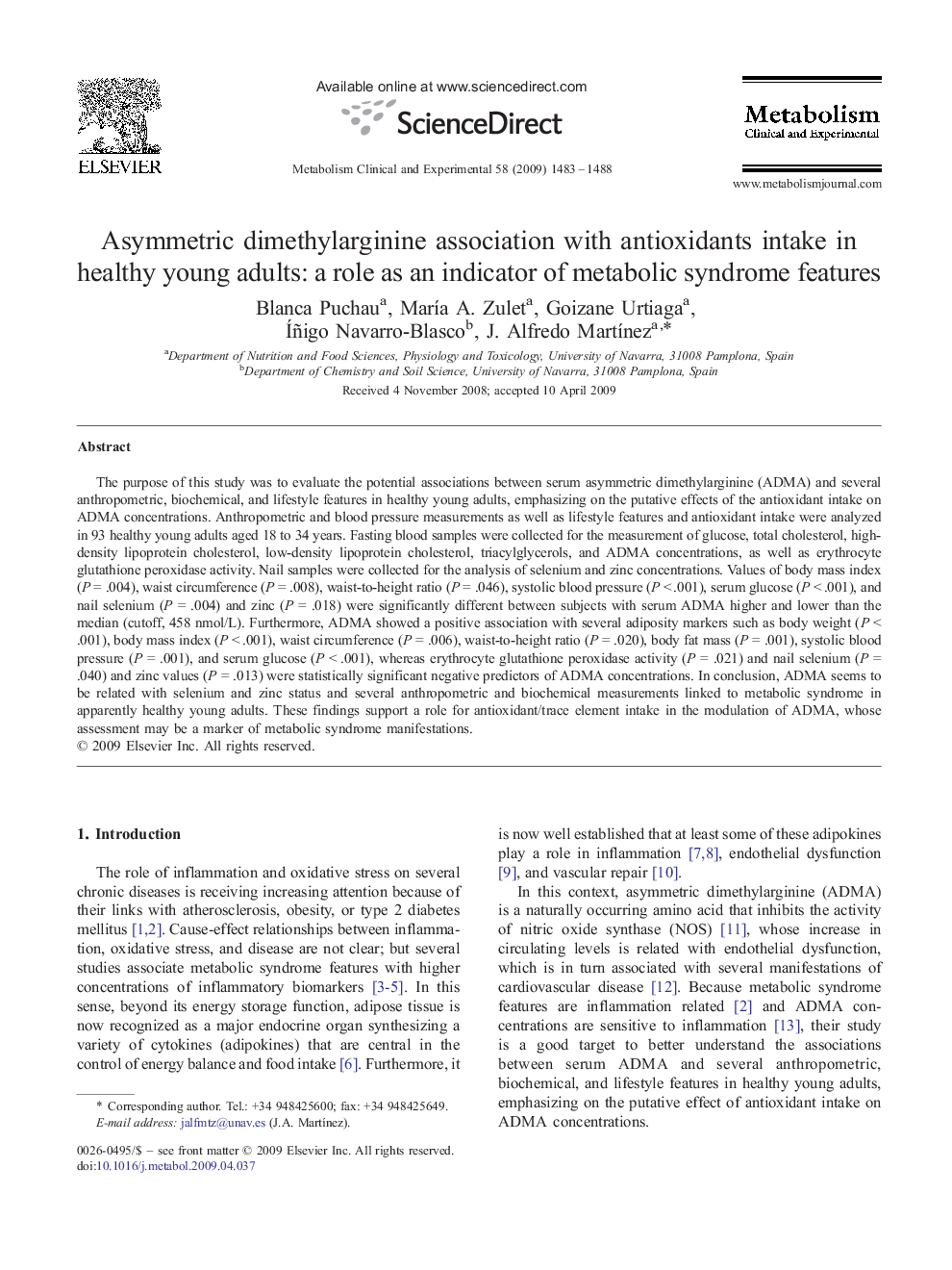| کد مقاله | کد نشریه | سال انتشار | مقاله انگلیسی | نسخه تمام متن |
|---|---|---|---|---|
| 2807151 | 1157148 | 2009 | 6 صفحه PDF | دانلود رایگان |

The purpose of this study was to evaluate the potential associations between serum asymmetric dimethylarginine (ADMA) and several anthropometric, biochemical, and lifestyle features in healthy young adults, emphasizing on the putative effects of the antioxidant intake on ADMA concentrations. Anthropometric and blood pressure measurements as well as lifestyle features and antioxidant intake were analyzed in 93 healthy young adults aged 18 to 34 years. Fasting blood samples were collected for the measurement of glucose, total cholesterol, high-density lipoprotein cholesterol, low-density lipoprotein cholesterol, triacylglycerols, and ADMA concentrations, as well as erythrocyte glutathione peroxidase activity. Nail samples were collected for the analysis of selenium and zinc concentrations. Values of body mass index (P = .004), waist circumference (P = .008), waist-to-height ratio (P = .046), systolic blood pressure (P < .001), serum glucose (P < .001), and nail selenium (P = .004) and zinc (P = .018) were significantly different between subjects with serum ADMA higher and lower than the median (cutoff, 458 nmol/L). Furthermore, ADMA showed a positive association with several adiposity markers such as body weight (P < .001), body mass index (P < .001), waist circumference (P = .006), waist-to-height ratio (P = .020), body fat mass (P = .001), systolic blood pressure (P = .001), and serum glucose (P < .001), whereas erythrocyte glutathione peroxidase activity (P = .021) and nail selenium (P = .040) and zinc values (P = .013) were statistically significant negative predictors of ADMA concentrations. In conclusion, ADMA seems to be related with selenium and zinc status and several anthropometric and biochemical measurements linked to metabolic syndrome in apparently healthy young adults. These findings support a role for antioxidant/trace element intake in the modulation of ADMA, whose assessment may be a marker of metabolic syndrome manifestations.
Journal: Metabolism - Volume 58, Issue 10, October 2009, Pages 1483–1488